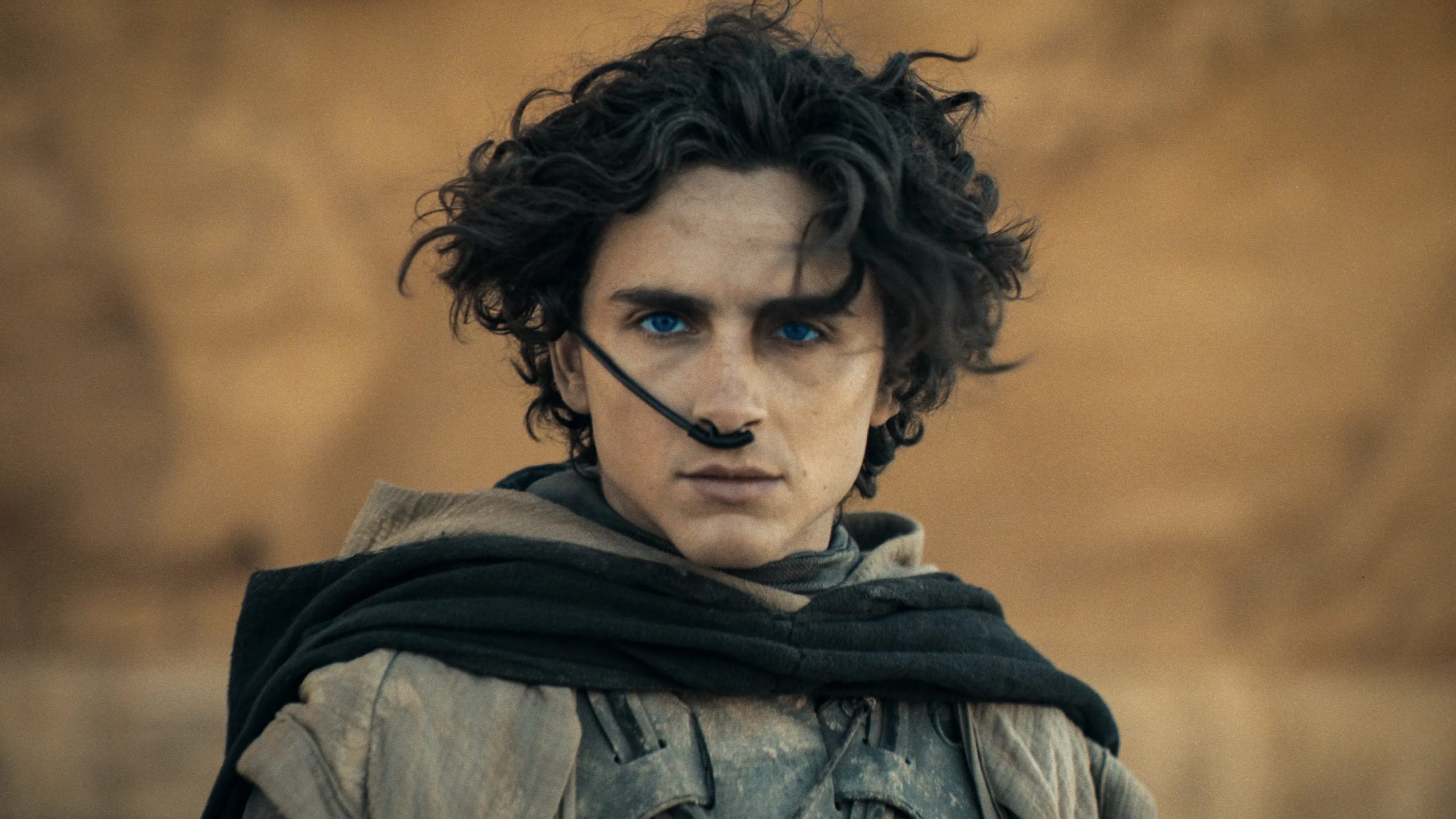
You know he’s the one because he’s a movie star with piercing eyes, floppy hair, goth vulnerability and untapped strength all in one. He’s Prince Hal making good. His name is Paul Atreides. It’s the name his parents gave him, but not the one he’ll be remembered by.
Names are important in Dune, be they taken, given or blasphemed. Paul takes the name Muad’Dib on the sands of Arrakis, also known as the planet Dune, where the melange, or “spice,” is harvested for the rest of the galaxy. Who controls the spice controls the power. That’s why Paul (Timothée Chalamet) and his mother, Jessica (Rebecca Ferguson), are on Arrakis: The house Atreides was responsible for overseeing spice production until the Emperor (Christopher Walken) eradicated the Atreides — save for Paul and Jessica — and installed the House of Harkonnen, led by the grotesque oil-loving Baron (Stellan Skarsgård), in their stead.
That’s about all the backstory you get for Dune: Part II. Director Denis Villeneuve’s adaptation of Frank Herbert’s seminal sci-fi novel hits the sand running with no catch-up or flashbacks. Not that you really need any: Dune traffics in so many archetypes and story conventions that it connects far-reaching dots through familiarity alone. Paul’s conversion to Muad’Dib on the sands of Arrakis certainly rhymes with Saul’s conversion to Paul on the road to Damascus. But when Dune’s Paul enters the Fremen’s sacred temple and announces, “I am the way!” he becomes more messiah than apostle. Though, considering his royal heritage and encounters outside the palace walls, maybe a parallel to Prince Gautama Buddha is more apt.
All of this is part and parcel of the hero’s journey or monomyth — an ancient story that has been replayed and revised countless times. Some of the most successful storytellers in the history of civilization have either cribbed from it or borrowed it in totality. Shakespeare knew his way around the monomyth, so it shouldn’t be surprising when Paul turns the corner from messiah-in-training to warrior king and Villeneuve’s movie enters full-blown Henry V territory.
Familiar? You bet. Exciting? Absolutely. Dune is huge. The whole movie thrums with bombastic images and sound. Hans Zimmer’s score rattles your seat — unless you see it in 4DX, and then the seat will rattle itself — and Villeneuve and cinematographer Greig Fraser craft a canvas so vast it engulfs you.
The sheer scale of the sandworms, the expanse of desert and the throngs of Freman surrounding Paul as he finds his voice makes Arrakis feel as tactile as your neighborhood. The home of the Harkonnen, where a black sun bleaches skin tones into a ghostly white, transforms Giedi Prime from sci-fi hokum into artistic wonder. And then there’s the Edenic garden where the elderly Emperor putters around with such metaphorical obviousness that it feels silly to scoff. It’s all so bombastic, so impressive and so deadly, deadly serious. Oh, for the want of chuckle on the sands of Arrakis.
Lucky for Villeneuve and his constantly expanding cast, there is an inexhaustible interest in this particular story, one that doesn’t need a tidy beginning, middle and end, only chapters. That makes Dune: Part II as incomplete as 2021’s Part I, which set the table and bowled over audiences with stunning battle sequences and the visual realization of a beloved book that was a long time coming. There are plenty of battles in Part II, but there’s also a lot more story. That alone makes the movie’s 160-minute runtime race right along toward Part III. And Part IV. And Part V...
ON SCREEN: Dune: Part II opens in wide release on March 1.
